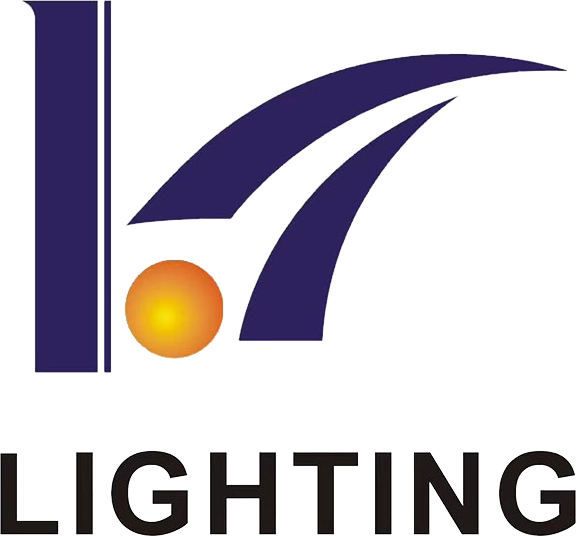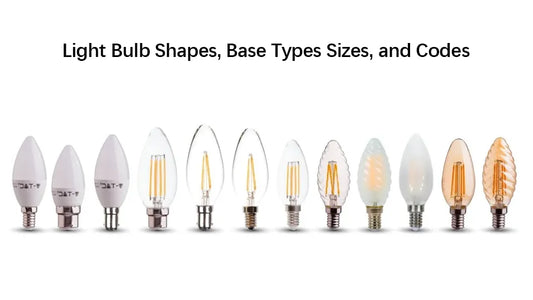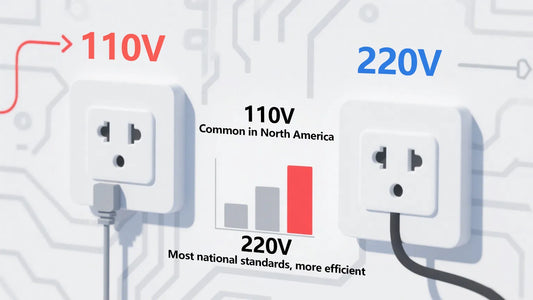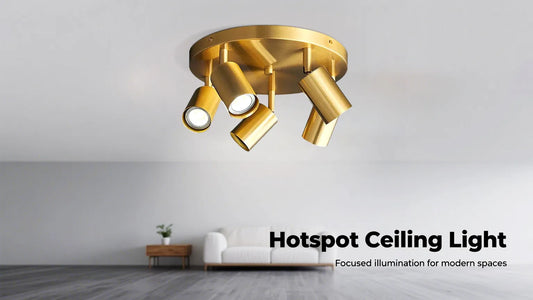Light Bulb Shapes, Base Types Sizes, and Codes
The Importance of Knowing Bulbs
It might be overwhelming to deal with the enormous range of light bulb shapes, bulb base sizes, types, and codes. Lighting efficiency and aesthetic appeal are greatly impacted by these nuances, which range from determining what is a Type B light bulb to choosing the perfect base size.
Everything from bulb codes and bulb types to the finest choices for different applications will be covered in this extensive guide. Learn how Katianlight products change any area by fusing efficiency and innovation. Learn more by exploring soft white vs daylight vs warm white or who invented the light bulb.

Light Bulb Shape Types
Light bulb shapes: There are many types of light bulbs in the world. Shapes of light bulbs are grouped according to their use and purpose. Such as A, B, C, CA, F, G, R, PS types, etc.
Bulb shape codes: The letters usually represent the shape of the bulb (A, B, C, PAR, MR…), and the numbers usually represent the size (diameter or length, which may be in millimeters or 1/8 inches).
-
A-Type Light Bulb
Shape: The most classic and versatile household light bulb shape, resembling a pear. -
Type B Bulb
Shape: Elongated, cylindrical, or slightly tapered, often with a pointed or rounded top to simulate a candle. -
Type C Bulb
Shape: More curved than Type B, with a distinct flame shape and usually a pointed top. -
G-Type Bulb
Shape: Standard spherical shape. -
R & BR Bulbs
Shape: R-type: Wide at the base, narrow at the glass end, with a shallow reflector and a wider beam. BR-type: An upgraded version of the R-type, with a “bulge” at the neck and a deeper reflector, resulting in a more concentrated and uniform beam. -
Type PS Bulb
Shape: Similar to the pear shape of the A-type bulb, but the proportions may differ slightly, sometimes being rounder or longer.

The following are some typical bulb types:
| Shape | Description | Applications |
|---|---|---|
| A-shaped | Traditional, round bulbs | Table lamps, general home lighting |
| Globe bulbs | Large, spherical bulbs | Vanity mirrors, ornamental fixtures |
| Candelabra bulbs | Slim, torpedo-like | Chandeliers, wall sconces |
| Reflector bulbs | Reflective coating for focused illumination | Recessed lights, spotlights |
| Tubular bulbs | Long and narrow | Appliances and lighting under cabinets |
Aware of Bulb Base Dimensions
The size of a bulb’s base, which joins it to the fixture, is essential for compatibility. Different bulb base sizes need be used with different types of bulbs. Understanding base type sizes is crucial when choosing a bulb. More about bulb bases types and codes.
1. Medium Base (Light Bulb Base Code E26):
The E26 base is one of the most mainstream bulb base standards in the world, especially in North America, Japan and parts of Asia.
Name: E26, “E” = Edison Screw, “26” = thread diameter 26 mm.
E26 is a universal base that can be adapted to various bulb shapes. This is the most used bulb base size for fixtures in homes. A19 bulbs and other common alternatives contain it. For example:
| Bulb Shape | Code | Typical Applications |
|---|---|---|
| A Type | A19, A21 | Main lighting for living rooms and bedrooms |
| BR Type | BR30, BR40 | Ceiling downlights |
| PAR Type | PAR20, PAR38 | Outdoor spotlights, stage spotlights |

2. Candelabra Base (E12 bulbs):
A smaller base that is ideal for fixtures that are small. It is frequently found in candelabra light bulbs.
3. Bi-pin Base:
Usually found in specialty bulbs, this type of base has two tiny pins that are perfect for small and focused illumination requirements.
Type B Light Bulb: What Is It?
“B-type bulbs” refer to candelabra light bulbs, named for their long, narrow, candle-flame-like shape. They are one of many standard shapes for light bulbs.A smaller base that is ideal for fixtures that are small. It is frequently found in candelabra light bulbs.
- Small screw base: This is a very common feature of B-type bulbs.
In the North American market, the most common B-type bulb base is the E12 (candelabra base), which has a diameter of approximately 12 mm. This is the standard small base used in decorative lighting fixtures such as chandeliers and wall sconces. - Decorative lighting: This is the primary application for Type B bulbs. The Type B light bulb is ideal for aesthetically pleasing fixtures since it is thin and ornamental.
They are widely used in chandeliers, sconces and ceiling lamps, table lamps, bedside lamps, hallway lights, and cabinet lighting.
B10 vs E12
B10 and E12 are completely different concepts. B10 refers to the bulb shape, while E12 refers to the base type, so they can’t be directly compared.
However, B10 and E12 are the most common combination, with B10 bulbs often used in E12 bases.
But don’t be fooled into thinking that a B10 bulb only works with an E12 base. B10 only defines the shape and diameter; the base can be E12, E14, or B15d.


Study of Candelabra Bulb Base Dimensions
Candelabra bulbs usually refer to candle-shaped bulbs such as type B and type C. The base size is the most critical parameter when purchasing. Choosing the wrong one will result in installation failure. The following are the main types of candelabra bulb bases in the world. The following is a detailed analysis:
E12 Base (North American standard: candlestick base)
- Name: Edison Screw 12mm.
- Thread Diameter: 12mm (≈0.47″).
- Common Regions: North America, Japan, Taiwan, etc.
- Compatible Bulbs: Type B, Type C, Small G Bulbs, Mini Decorative Bulbs
E14 Base (European/International Standard: Small Edison Screw)
- Name: Edison Screw 14mm.
- Thread Diameter: 14mm (≈0.55″).
- Common Regions: Europe, UK, Australia, China, and most other regions worldwide.
- Compatible Bulbs: Type B, C candlesticks, and G45 bulbs.
Do LED candelabra bulbs have the same base as incandescent bulbs?
Absolutely identical! LED candelabra bulbs use the same base standards (E12/E14), making them a direct replacement.

Decoding Codes for Light Bulbs
The codes on light bulbs (such as A19, BR30, PAR38) are industry-standard designations that directly correspond to their shape, size, and features. Understanding how to decode them will help you identify key specifications at a glance when choosing a bulb.
The letter part represents the shape of bulb. For example:
| Code | Full Shape Name | Common Name | Typical Appearance |
|---|---|---|---|
| A | Arbitrary | Standard / Pear Shape | Classic pear-shaped household bulb |
| B | Bullet or Blunt Tip | Bullet / Tip | Slim cylinder with pointed or rounded top |
| C | Candle or Cone | Candle Shape | Curved flame-like shape, mimics a candle |
| G | Globe | Globe Shape | Perfect spherical shape |
| BR | Bulged Reflector | Bulged Reflector Type | For recessed lighting, bulged neck |
| PAR | Parabolic Aluminized Reflector | Parabolic Reflector | Strong focus beam, durable glass with ridges |
The number part indicates the bulb size, actual diameter (mm) = number × 1/8 inch(≈ 3.175 mm), for example light bulb size chart:
| Code | Calculation (inches → millimeters) | Actual diameter |
|---|---|---|
| A19 | 19 × 3.175 ≈ 60 mm | ≈ 60 mm |
| B10 | 10 × 3.175 ≈ 32 mm | ≈ 32 mm |
| BR30 | 30 × 3.175 ≈ 95 mm | ≈ 95 mm |
| PAR38 | 38 × 3.175 ≈ 121 mm | ≈ 120 mm |
Relationship between light bulb shapes and bulb base types
The shape of bulb and type of base are two completely independent dimensions, and there is no mandatory binding relationship between them.
Bulbs and bases can be combined in any way, just like clothes and buttons. B-type candelabra bulbs come with more than just E-series bases. For example:
- B10 bulb can be paired with E12, E14, BA15d, or GU10 base.
Therefore, bases of the same bulb may vary not only in size but also in type, so be mindful when purchasing.
Light Bulb Diameter and Length Designations
Making the right choice for your fixture can be facilitated by being aware of the diameter and length designations for light bulbs. Your light bulb will fit correctly and produce the required lighting effect thanks to these specs.
Diameter Designations (in inches)
The diameter of light bulbs, measured in eighths of an inch, is frequently used to describe them. For instance:
- A19: 19/8 inches, with a diameter of 2.375 inches
- B10: 10/8 inches, with a diameter of 1.25 inches
- PAR38: 38/8 inches, with a diameter of 4.75 inches
Designations for Length (Inches)
A bulb’s ability to fit into fixtures is also influenced by its length. Common names are:
- A19 – 4.5 in.
- T8: 48 inches (for fluorescent tubular lights)
- PAR30: 3.75 inches
Selecting the ideal light bulb for a small room or an area with high ceilings might be made easier if you are aware of these measurements.
Recap
The mainstream bulbs and base types in different countries are different. Selecting the ideal lighting solution is made easier by being aware of light bulb shapes, bulb base sizes, diameter and length designations, and codes. From stylish Type B light bulbs to multipurpose A19 bulbs.



